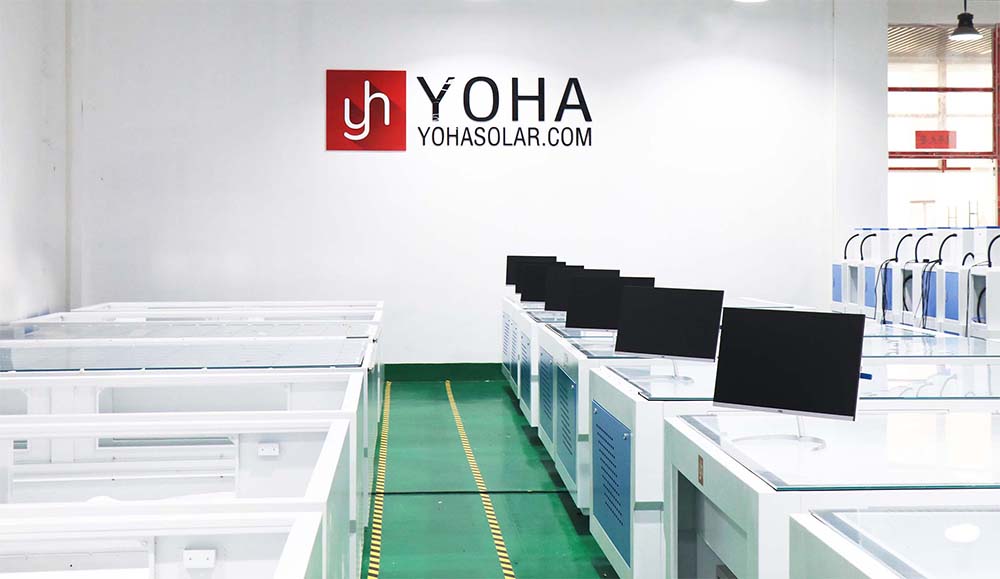Amidst the dramatic development of the photovoltaic industry, solar module production lines stand as a pivotal link connecting upstream and downstream processes. Their technical level and manufacturing efficiency directly determine the performance, cost, and market competitiveness of the final products. A highly automated and intelligent solar module production line has become a strategic high ground for PV manufacturers vying for future success.

Modern solar module production lines are the crystallization of precision engineering and cutting-edge technology, typically composed of multiple highly coordinated modular units:
- Material Preparation and Sorting: Core materials such as silicon wafers, glass, backsheets, encapsulant films (EVA/POE), and ribbons undergo rigorous inspection and precise sorting at this stage, laying the foundation for high-quality modules. Automated handling systems significantly enhance transfer efficiency.
- Cell Processing and Interconnection: This is the core process. It involves precise cell positioning, laser scribing (for technologies like half-cut or shingled cells), and string soldering (single/double soldering, utilizing multi-busbar (MBB) technology to enhance efficiency and reliability). High-precision stringers are the "heart" of the module production line.
- Layup and Lamination: The interconnected cell strings are precisely laid onto a glass substrate, covered with encapsulant film and a backsheet, forming a layered structure. Visual positioning systems ensure layup accuracy.
- Lamination and Curing: Utilizing laminators under vacuum, high temperature, and high pressure, the encapsulant film melts and flows, permanently bonding the glass, cells, and backsheet into a sealed, weather-resistant module body. Process stability is paramount.
- Framing and Junction Box Installation: Aluminum alloy frames are installed onto the laminated module to provide mechanical strength. Junction boxes are soldered and sealed to ensure reliable current conduction. Automated sealing (glue dispensing) and framing improve consistency.
- Cleaning and Final Testing: Modules undergo thorough cleaning before entering rigorous testing. IV testers (power testing), EL testers (detecting defects like micro-cracks), and insulation/high-voltage testing simulate real-world conditions. This ensures every module meets performance standards and is safe and reliable.
The core competitiveness of modern solar module production lines is reflected in three key technological highlights:
- Deep Integration of Automation and Flexibility: The entire line, from material handling and processing to inspection, achieves high-level automated operation. Production lines possess rapid changeover capability, accommodating various specifications (e.g., large formats like 182mm/210mm), technology roadmaps (PERC/TOPCon/HJT), and product types (single-glass/double-glass modules).
- AI-Enabled Intelligent Process Control & Quality Inspection: Machine vision-based online inspection systems monitor key parameters in real-time (e.g., soldering quality, layup precision, lamination bubbles). Combined with AI algorithms, they perform quality judgment and dynamic optimization of process parameters, achieving closed-loop quality control and significantly reducing defect rates.
- Data-Driven Digital Lean Management: Manufacturing Execution Systems (MES) run through the entire module production process, enabling real-time production data collection, equipment status monitoring, precise material traceability, and comprehensive efficiency analysis. This provides data support for continuous optimization.
Deploying advanced solar module production lines delivers multi-dimensional core value to enterprises:
- Efficiency Leap and Cost Optimization: High-speed automated equipment and lean process management significantly boost per-capita output and Overall Equipment Effectiveness (OEE). Economies of scale drive down per-watt manufacturing costs.
- Exceptional Quality and Yield Assurance: Precision process control and comprehensive online inspection minimize human error, ensuring modules are high-efficiency, reliable, and long-lasting, enhancing brand premium capability.
- Agile Response and Market Capture: Flexible design enables lines to quickly adapt to changing market demands, shortening new product introduction cycles and seizing opportunities from technological iterations and niche markets.
- Green Manufacturing and Sustainability: High-efficiency, energy-saving equipment and precise material control reduce production energy consumption and waste, aligning with global green manufacturing trends and improving corporate ESG performance.
Looking ahead, solar module production lines are rapidly evolving towards greater intelligence (deeper AI integration), enhanced compatibility (adapting to ultra-thin wafers, novel perovskite tandem technologies), superior cost-effectiveness (further cost reduction and efficiency gains), and comprehensive digital twins (virtual commissioning, predictive maintenance). Continuously innovating and upgrading solar module production lines is not only the core vehicle for high-quality, low-cost PV manufacturing but also the primary driving force for the entire industry to break efficiency boundaries and accelerate the energy transition.
Investing in advanced solar module production lines is an investment in the future competitiveness of PV manufacturing. It is not only the cornerstone of mass production but also the platform for implementing technological innovation. It continuously drives the increasing share of solar power in the global energy mix, lighting the path to a sustainable future.
keywords:
 Chinese
Chinese
 English
English
 Chinese
Chinese
 English
English

